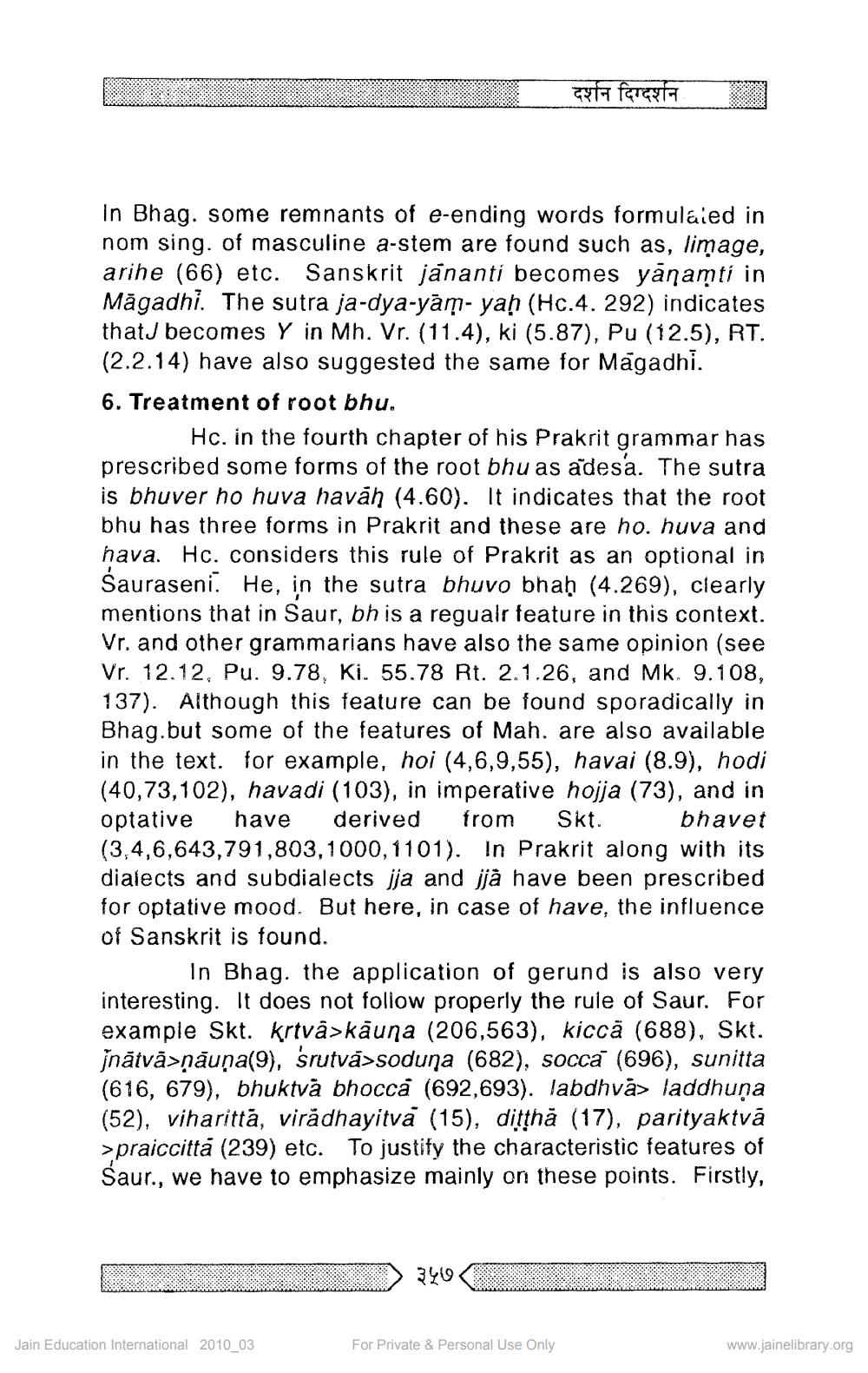________________
ta ferest
In Bhag. some remnants of e-ending words formulaied in nom sing. of masculine a-stem are found such as, limage, arihe (66) etc. Sanskrit jananti becomes yānamti in Māgadhi. The sutra ja-dya-yām- yah (Hc.4. 292) indicates that becomes Y in Mh. Vr. (11.4), ki (5.87), Pu (12.5), RT. (2.2.14) have also suggested the same for Magadhi. 6. Treatment of root bhu.
Hc. in the fourth chapter of his Prakrit grammar has prescribed some forms of the root bhu as adesá. The sutra is bhuver no huva havăn (4.60). It indicates that the root bhu has three forms in Prakrit and these are ho. huva and nava. Hc. considers this rule of Prakrit as an optional in Sauraseni. He, in the sutra bhuvo bhaḥ (4.269), clearly mentions that in Saur, bh is a regualr feature in this context. Vr. and other grammarians have also the same opinion (see Vr. 12.12, Pu. 9.78, Ki. 55.78 Rt. 2.1.26, and Mk. 9.108, 137). Although this feature can be found sporadically in Bhag.but some of the features of Mah. are also available in the text. for example, hoi (4,6,9,55), havai (8.9), hodi (40,73,102), havadi (103), in imperative hojja (73), and in optative have derived from Skt. bhavet (3,4,6,643,791,803,1000,1101). In Prakrit along with its dialects and subdialects ija and isä have been prescribed for optative mood. But here, in case of have, the influence of Sanskrit is found.
in Bhag. the application of gerund is also very interesting. It does not follow properly the rule of Saur. For example Skt. krtva>käuna (206,563), kicca (688), Skt. jnātvā>ņāuṇa(9), śrutvá>soduna (682), socca (696), sunitta (616, 679), bhuktvā bhoccă (692,693). labdhvās laddhuna (52), viharittă, virådhayitva (15), ditthă (17), parityaktvā >praiccittà (239) etc. To justify the characteristic features of Saur., we have to emphasize mainly on these points. Firstly,
Jain Education International 2010_03
For Private & Personal Use Only
www.jainelibrary.org




